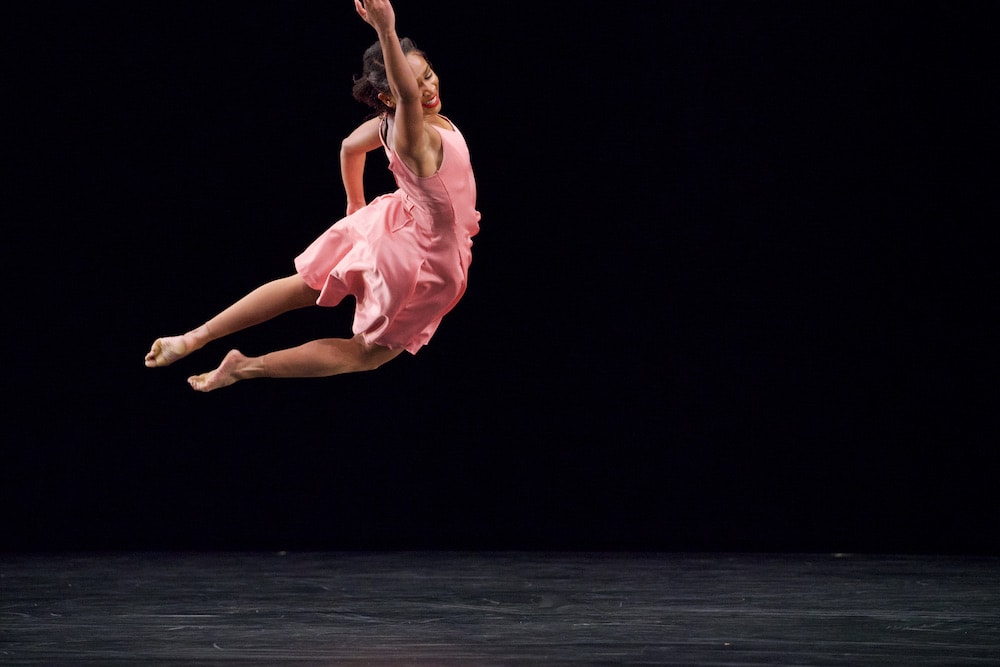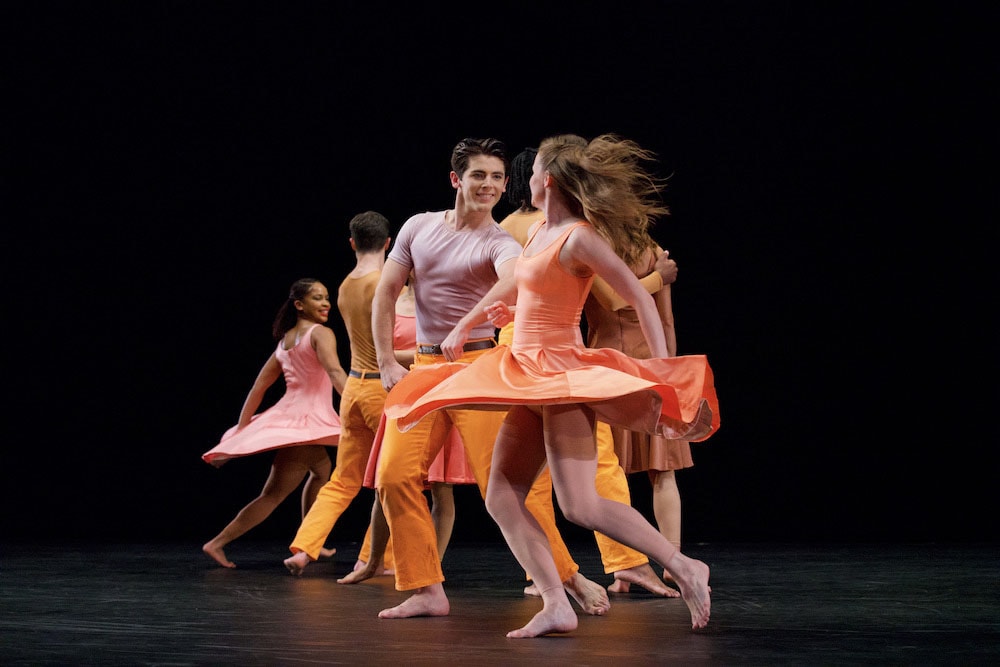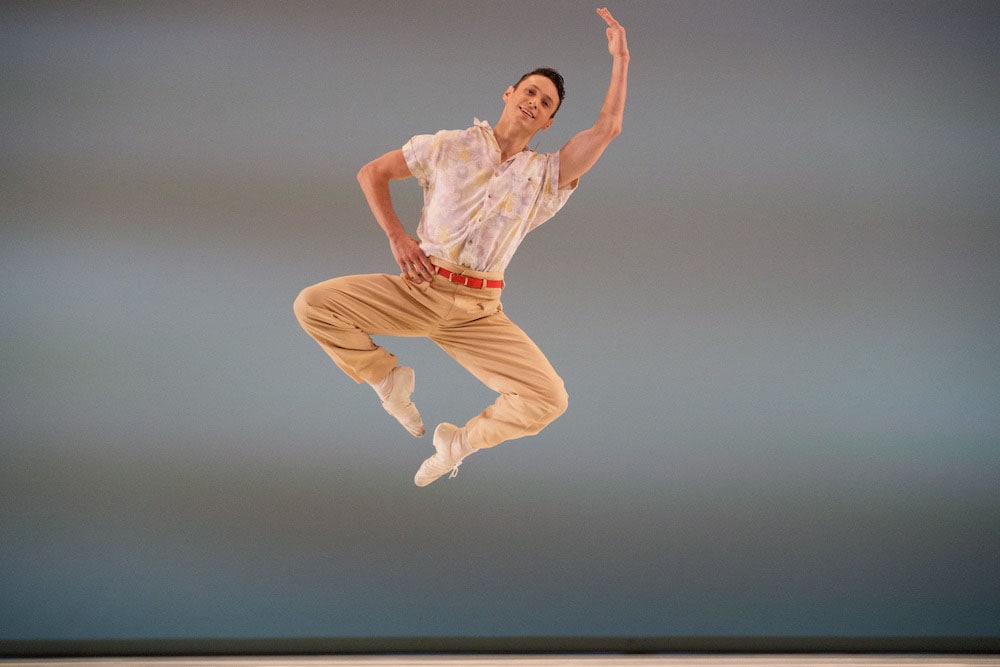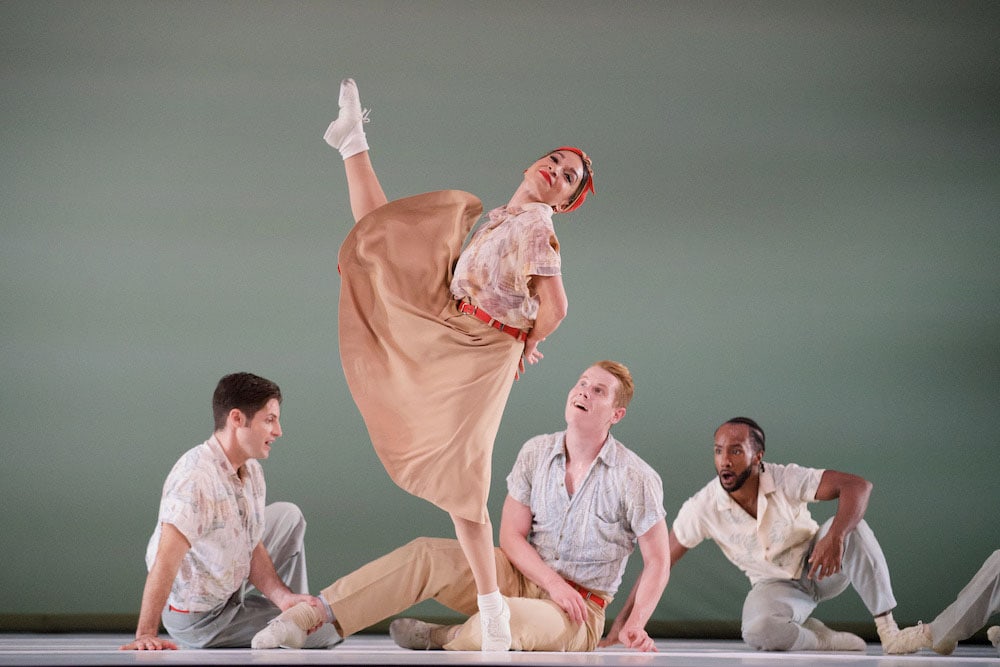At this moment, as the nation toggles between light and dark, hope and despair, there was no better choreographer to turn to for the Kennedy Center to inaugurate its 2021–22 (fingers crossed!) dance season. The Paul Taylor Dance Company, founded by the maverick choreographer in 1954, remains an iconic American legacy company. Taylor, who had some DC roots, would sometimes reminisce to me about growing up on Connecticut Avenue, near the National Zoo, and once he regaled me with a tale of peacocks escaping.
The creator of almost 150 choreographic works, Taylor died in 2018, passing on leadership in the company to a former Taylor dancer Michael Novak. In recent years the company, under Novak’s artistic direction, has invited in other American choreographers to share their aesthetic. But this first live program back, after 18 months of Zoom and virtual performances, homed in on two seminal Taylor works:

“Esplanade,” the mostly playful romp, set to Bach’s Violin Concerto in E Major, that the choreographer made as an experiment in 1975. He challenged himself to not use a single “dance” step, relying solely on pedestrian movement, although elevated by the impeccably trained dancers performing the runs, walks, skips, jumps, grapevines, dashes, and crawls as the dancers converge, separate, and regroup at breakneck speed during the allegro.

A master of modulating moods, “Esplanade” serves as a Taylor primer in interweaving light, free-for-all fun with a darker, more contemplative middle section, the largo section of Bach’s Double Concerto for Two Violins in D Minor. Here, the sunny outdoorsy-feeling spaciousness of the first movement contracts. A trio of dancers — two women, one dressed androgynously, reach and try to connect with a man, but a sense of disconnection and despair hangs over the darkened bare stage, while a fourth dancer, as if responding to an alarm, frantically circles this tightly knit trio that can’t reach out and touch one another. Perhaps it’s a family portrait of loss and broken promises.
But again, the music brightens and the playfulness resumes. Taylor’s dancers are beloved for their verve and ability to fall, tumble, and rebound with nary a misplaced bobble. The section where the nine dancers continually run, skip, dive, and tumble to the floor is always breath-catching — someone’s surely going to get hurt — audible gasps could be heard in the audience. But amid the chaos of flying leaps that slide like a runner into home plate, with these continuous falls to the floor, the enduring takeaway is that even as we stumble and fall, we don’t or shouldn’t stay down for long. The world is off-kilter, and has been for a long while, but we’re all still here, making the best in precarious situations. Interestingly, this company of young dancers carries themselves with more lightness and lift. The Taylor style during his lifetime was a weightier, more grounded feeling, this company has just three dancers who have been members for more than five years. Most joined in 2017 or after, with the newest hires coming aboard in 2020, and this year, even amid the pandemic, virtual classes and rehearsals went on.

“Company B,” the opener, was commissioned by and premiered at the Kennedy Center 30 years ago, in a joint venture with Houston Ballet. I remember that program and the ballet’s dancers, too, had a lighter, lither approach to the Taylor style, but the piece, even with its energetic swing tempos, contains that Tayloresque moodiness, that toggling between light and dark, joy and sadness.
Set to the effervescent songs of the Andrews Sisters, who served as a soundtrack for a generation of American soldiers and civilians during World War II with bright bouncy rhythms and fun, cheesy rhymes. But, as well, there are darker moments and Taylor doesn’t wait for the wrenching war-separating-lovers lyrics. The opening Yiddish inflections of “Bei Mir Bist du Schon” captivate the dancers into a sprightly jitterbug, yet in the background, a silhouette of men slowly marches, kneels, aims rifles, and tumbles. This fore- and backgrounding serves as a perfect metaphor for the American experience of World War II — a war that was fought an ocean away, not on U.S. soil. Throughout “Company B,” that dichotomous sense of joy and sorrow intermingles on stage in foreground and background. There are impish solos and plenty of mugging in “Tico-Tico,” “Pennsylvania Polka,” and “Rum and Coca Cola.” And wrenching moments, too, in “I Can Dream, Can’t I?” featuring Christina Lynch Markham longing for her overseas beau, or in “There Will Never Be Another You” as Maria Ambrose mourns for her fallen lover Devon Louis.

“Company B” ends with a reprise of “Bei Mir Bist du Schon” that is darker, because Taylor reflects back America’s World War II history: that what was bright and flirty on the home front was not what was happening overseas, in Europe. Is the Yiddish song a tell, perhaps, for the Holocaust and Hitler’s extermination of 6 million Jews? Or is it a coincidence that Taylor opened and closed “Company B” with it? He was typically elliptical when discussing his dancers, famously answering the question “What’s the dance about?” with the rejoinder “Oh, 20 minutes.”
In the coming months and years, undoubtedly many artists will craft works that respond to our immediate crises — the global pandemic and racial reckoning. There will be time to ruminate and explore, but at this moment, the familiarity of a 20th-century master choreographer feels just right to ease us back into the theater on a high note.
Running time: One hour 20 minutes, with one intermission.
Paul Taylor Dance Company plays through October 9, 2021, at the Kennedy Center Eisenhower Theater, 2700 F Street, NW, Washington, DC. To purchase tickets ($29 – $79), call (202) 467-4600 or go online.
For The Kennedy Center’s COVID Safety Plan, click here.




